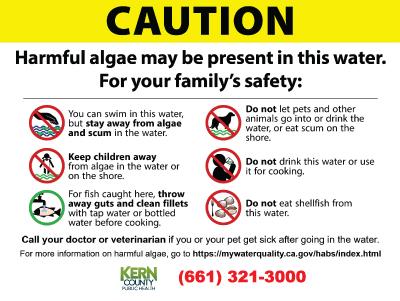Blue-Green Algae: Cyanobacteria
Cyanobacteria, also called blue-green algae, are microscopic organisms found naturally in all types of water. These single-celled organisms live in fresh, brackish (combined salt and fresh water), and marine water. These organisms use sunlight to make their own food. In warm, nutrient-rich (high in phosphorus and nitrogen) environments, cyanobacteria can multiply quickly, creating blooms that spread across the water’s surface. The blooms might become visible.
Cyanobacteria blooms form when cyanobacteria, which are normally found in the water, start to multiply very quickly. Blooms can form in warm, slow-moving waters that are rich in nutrients from sources such as fertilizer runoff or septic tank overflows. Cyanobacteria blooms need nutrients to survive. The blooms can form at any time, but most often form in late summer or early fall.
You may or may not be able to see cyanobacteria blooms. They sometimes stay below the water’s surface, they sometimes float to the surface. Some cyanobacteria blooms can look like foam, scum, or mats, particularly when the wind blows them toward a shoreline. The blooms can be blue, bright green, brown, or red. Blooms sometimes look like paint floating on the water’s surface. As cyanobacteria in a bloom die, the water may smell bad, similar to rotting plants.
Cyanobacteria blooms that harm people, animals, or the environment are called cyanobacteria harmful algal blooms. Harmful cyanobacteria blooms may affect people, animals, or the environment by blocking the sunlight that other organisms need to live. Cyanobacteria blooms can steal the oxygen and nutrients other organisms need to live. Sometimes, cyanobacteria can produce toxins called cyanotoxins. Cyanotoxins are among the most powerful natural poisons known. They can make people, their pets, and other animals sick. Unfortunately, there are no remedies to counteract the effects. You cannot tell if a bloom has toxins by looking at it.
For more information on cyanobacteria, click HERE
- Do not let your pets or livestock graze near, drink, or swim in water where you see cyanobacteria blooms, foam, or scum on the surface.
- If your animal gets in water with a bloom, immediately wash it off with clean water. Do not let the animal lick algae off of its fur.
- Call a veterinarian if your animal shows any of these symptoms of cyanobacteria poisoning: loss of energy, loss of appetite, vomiting, stumbling and falling, foaming at the mouth, diarrhea, convulsions, excessive drooling, tremors and seizures, or any unexplained sickness that occurs within a day or so after being in contact with water.
For information on human health and safety:
For information on animal health and safety:
For more information on cyanobacteria blooms:
- Call CDC Info: 800-CDC-INFO (800-232-4636) or contact your local or state health department or Call the Poison Information Center (800-222-1222)
- State Water Board Media Release: Make It a Habit and Be Mindful of HABs - Harmful Algal Blooms
2700 M St. Suite 300
Bakersfield, CA 93301
661-862-8740



